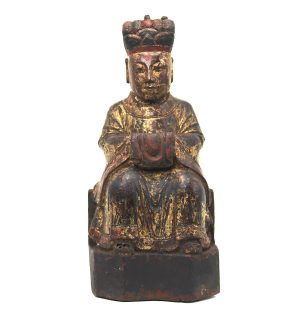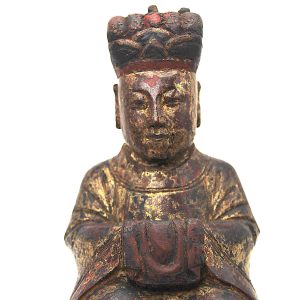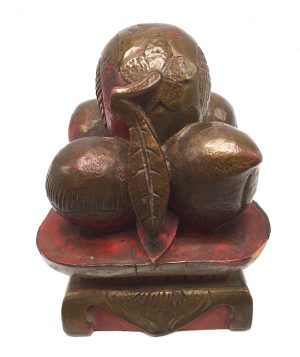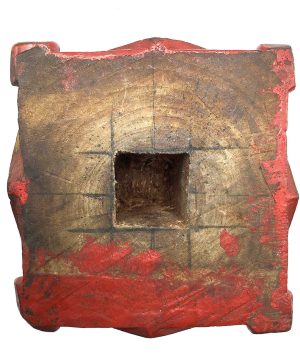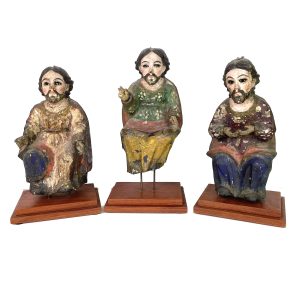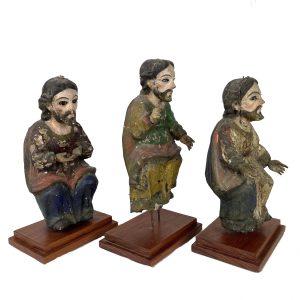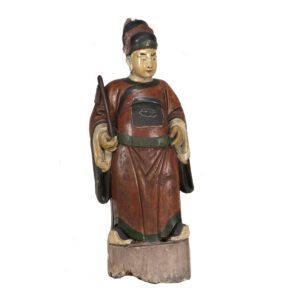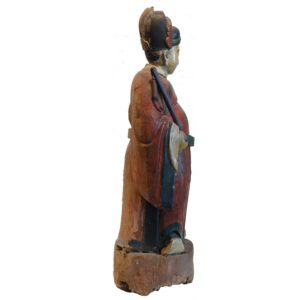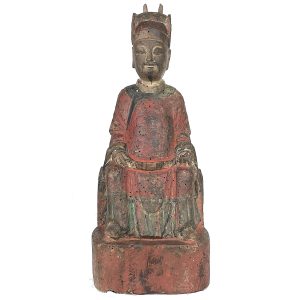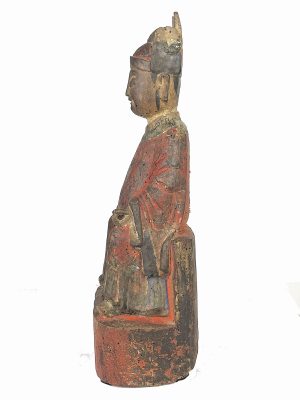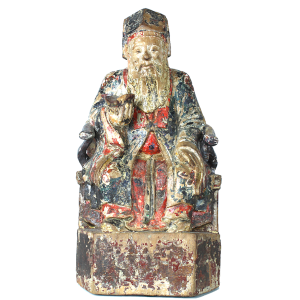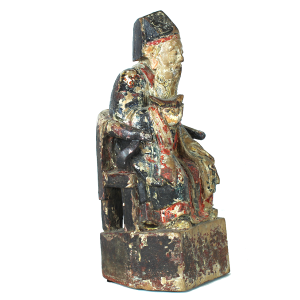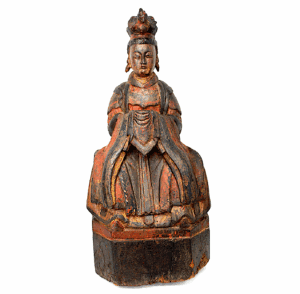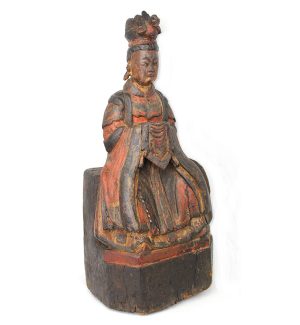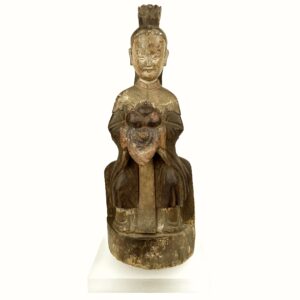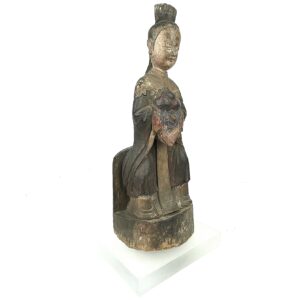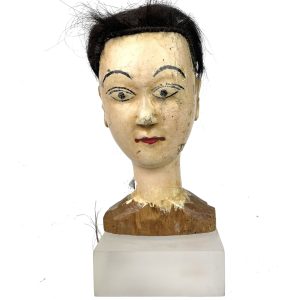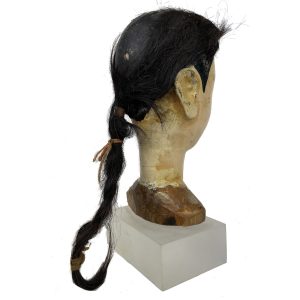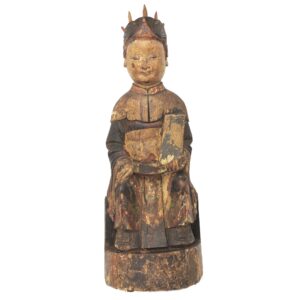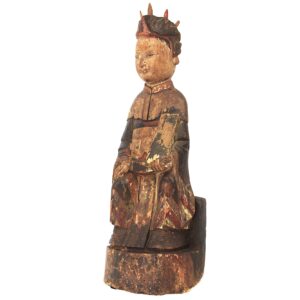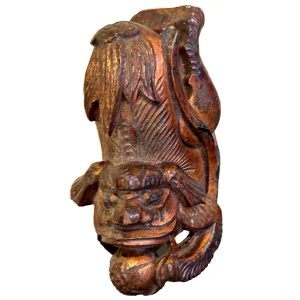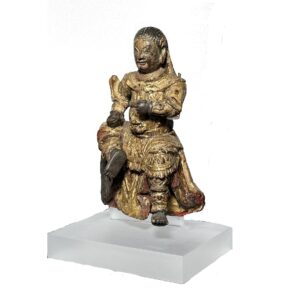Showing 25–36 of 204 results
-
Sale!


$350.00 Original price was: $350.00.$250.00Current price is: $250.00.
H: 9.25″ W: 4.5″ D: 3.25″ | FREE SHIPPING WITHIN CONTINENTAL U.S.
Taoist official home altar carving painted on front and back with red, gilt and lacquer. Hands under ritual cloth symbolically holding a hu tablet associated with Taoist officials. Taoist were responsible for protecting against evil in this life, Buddhist for souls in next life.
-
Sale!


$225.00 Original price was: $225.00.$155.00Current price is: $155.00.
H: 4.75 ” Dia: 3.675 ” | FREE SHIPPING WITHIN CONTINENTAL U.S.
This carved food offering was an auspicious bed ornament to bring the lucky couple prosperity, health, a long life and many sons as the pomegranate symbolizes fertility, the peaches longevity. Carved offerings were often wedding gifts.
-
Sale!


$1,475.00 Original price was: $1,475.00.$1,250.00Current price is: $1,250.00.
Tallest H: 11″ W: 5.5″ D: 3.5″ | CALL 213-568-3030 OR EMAIL [email protected] FOR SHIPPING
This rare trio of carved Apostles emanate a sense power and feeling that conveyd the emotion and spiritual character of the figures and what they represent. Each mounted on 2-tiered wood base.
-
Sale!


$4,800.00 Original price was: $4,800.00.$3,750.00Current price is: $3,750.00.
H: 32″ W: 9″ D: 8″ | CALL 213-568-3030 OR EMAIL [email protected] FOR SHIPPING
Lu Donghin, most celebrated of 8 Taoist Chinese Immortals, rides on clouds with a 2-edged sword to cut through greed, lust, sorrow. Venerated in temples, grottoes, sacred mountains, he is associated with medicine, elixir of life and power over evil spirits. This 18th large figure with cloud design on chest.
-
Sale!


$395.00 Original price was: $395.00.$295.00Current price is: $295.00.
H: 13.75″ W: 5.25″ D: 4″ | FREE SHIPPING WITHIN CONTINENTAL U.S.
This ancestor figure portrayed as a Chinese civilian official honors the family with his sign of high status. He grasps his official’s belt, his red robes symbolize fu for auspicious blessings. Unlike many serious officials he is approachable, with a smiling face.
-
Sale!


$775.00 Original price was: $775.00.$495.00Current price is: $495.00.
H: 12.125″ W: 6.125″ D: 4.125a” | FREE SHIPPING WITHIN CONTINENTAL U.S.
Tudi Gong in horseshoe chair with typical kindly face, flowing beard, officials-attire: high hat, double waist belt, red color, holding a tael gold bar as wish for wealth. Most popular rural deity who protects small towns, residents and agriculture.
-
Sale!


$1,550.00 Original price was: $1,550.00.$985.00Current price is: $985.00.
H: 17.25″ W: 8″ D: 6″ CALL 213-568-3030 OR EMAIL [email protected] FOR SHIPPING.
Exquisite carved Queen Mother of the West, elaborate phoenix in crown. Most significant Taoist female deity, patron of women, divine teacher, determines length of people’s lives, associated with virtue and peaches of immortality.
-
Sale!


$595.00 Original price was: $595.00.$450.00Current price is: $450.00.
H: 15.5″ W: 7″ D: 4.5″ | FREE SHIPPING WITHIN CONTINENTAL U.S.
Reverent female Taoist attendant holding offering plate of 3 dumplings or fruits symbolizing 3 ancient gold or silver coins as a symbol of wealth and a wish for passing 3 imperial examination levels to assure the family’s status and financial stability.
-
Sale!


$295.00 Original price was: $295.00.$195.00Current price is: $195.00.
H: 8.5″ W: 4″ D: 2.75″ | FREE SHIPPING WITHIN CONTINENTAL U.S.!
Antique Chinese puppets were often made in several parts with removable heads. This antique carved head of a beauty has delicately painted features and an animal hair braided down the back. Since there is an area without hair towards the back, she likely originally wore a hat or headdress. A hole on top probably accommodated strings.
-
Sale!


$495.00 Original price was: $495.00.$325.00Current price is: $325.00.
H: 12 ” W:4.3 ” D: 2.25 ” | FREE SHIPPING WITHIN CONTINENTAL U.S.
Charming consecrated image of female Toast priest with Phoenix headdress holding a hu tablet. Women were welcomed as priests since Taoism beginnings.
-
Sale!


$395.00 Original price was: $395.00.$295.00Current price is: $295.00.
Ht: 5″. W: 4″. D: 2.5″ | FREE SHIPPING WITHIN CONTINENTAL U.S.
Pair of red and gold antique carved lions were likely part of a woman’s bed frame to bless and protect its occupants. Each holds a spherical 5-leaf plums as wish for 5 Blessings of Happiness and for passing civilian official exams. Acrylic base.
-
Sale!


$375.00 Original price was: $375.00.$295.00Current price is: $295.00.
H: 8.25″ W: 5.5″ D: 4″ | FREE SHIPPING WITHIN CONTINENTAL U.S.
Statues of Guandi, the God of War and Justice were displayed in Temples and home shrines throughout China. Part of a larger carving, wears military maille, has taotie – a warning against gluttony – and is covered in gold as a sign of power.
End of content
End of content

